Abstract
Does gastrin stimulate gastric acid secretion by direct action on oxyntic cells, by releasing histamine, or by being potentiated by histamine? Previous studies in the mouse pointed to gastrin-regulated histamine release. Guinea pig and rat are well known to vary in their sensitivity to histamine. Therefore, the effects of histamine and pentagastrin were compared quantitatively on isolated, lumen-perfused, stomach preparations from these species in the absence and presence of histamine H2-receptor blockade. The loss of potency of histamine in the rat was mirrored by a loss of potency of pentagastrin consistent with the idea that pentagastrin acts by releasing histamine. In the rat, a well-defined pentagastrin curve was obtained in the presence of histamine H2-receptor block as though pentagastrin acts both directly on the oxyntic cell and indirectly by releasing histamine. It was not necessary to invoke a potentiating interaction between histamine and pentagastrin at the oxyntic cell; the two effects appeared simply to add. Potentiation was observed, however, between other combinations of stimuli, for example, between vagal nerve and pentagastrin stimulation. The physiological consequences of these results are discussed.
Full text
PDF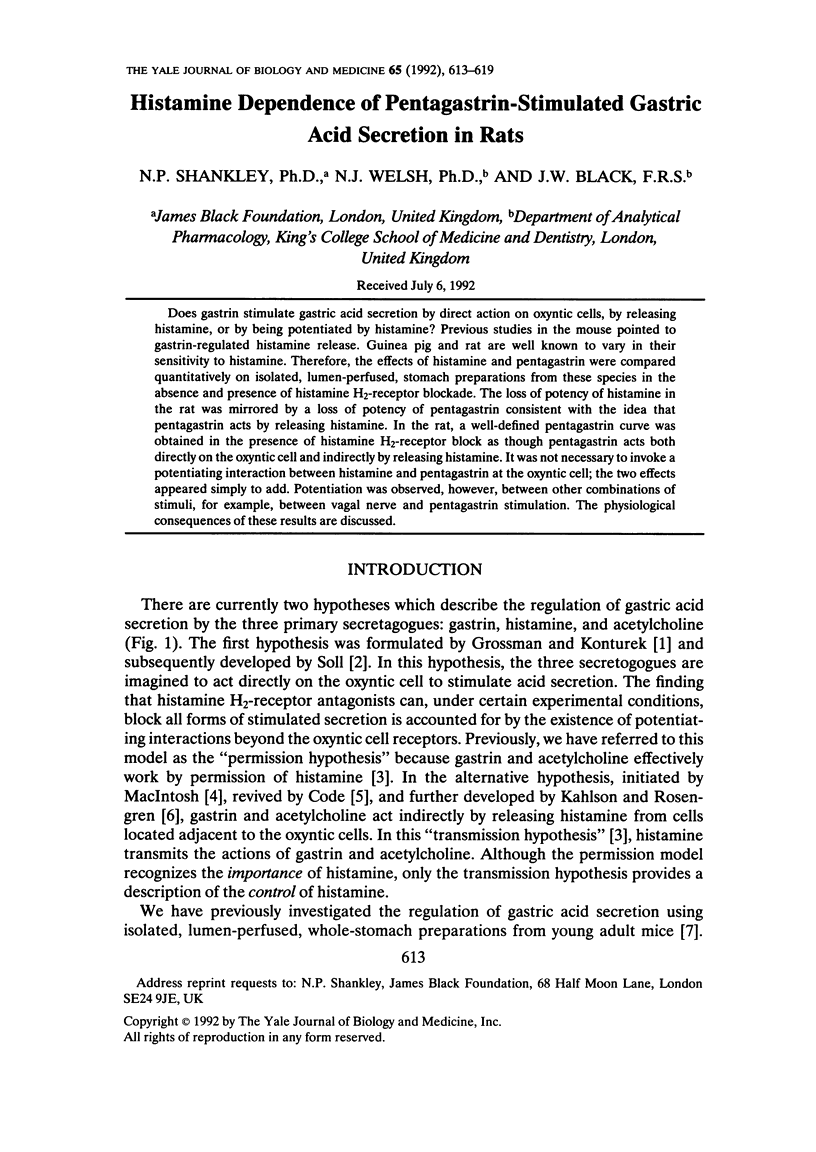
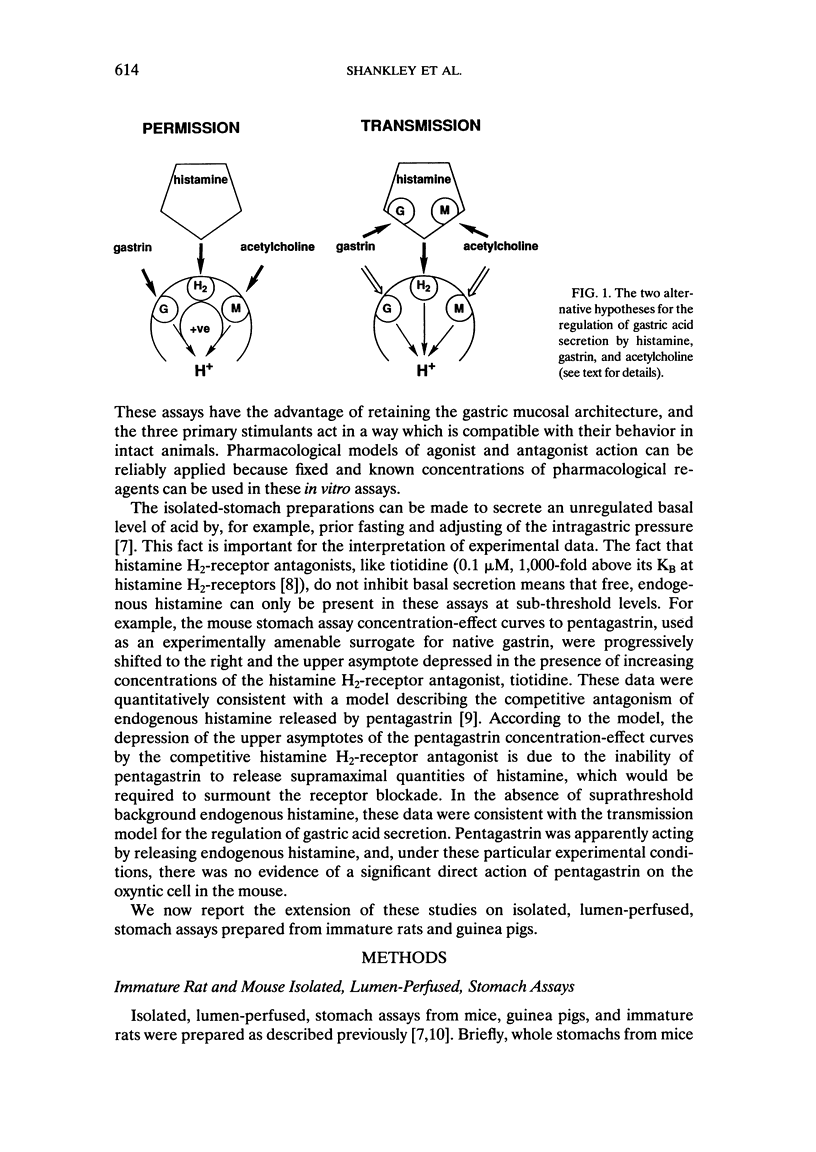
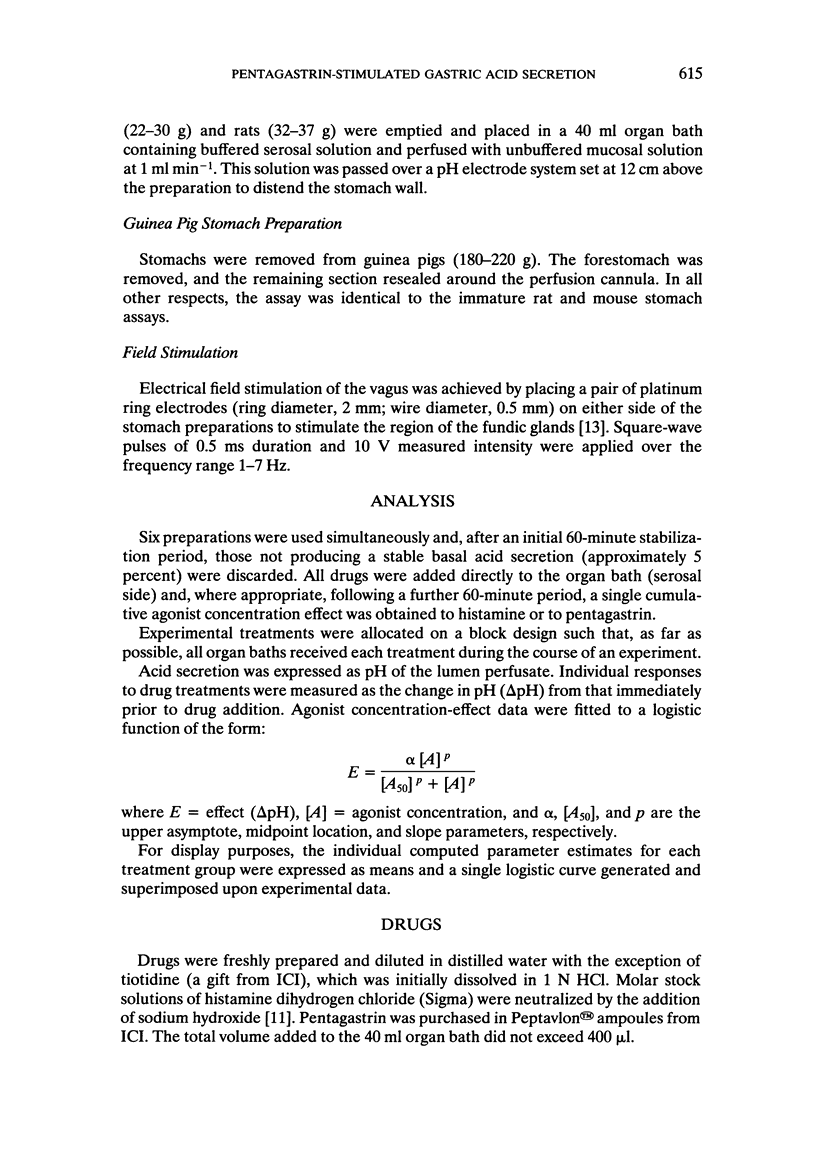
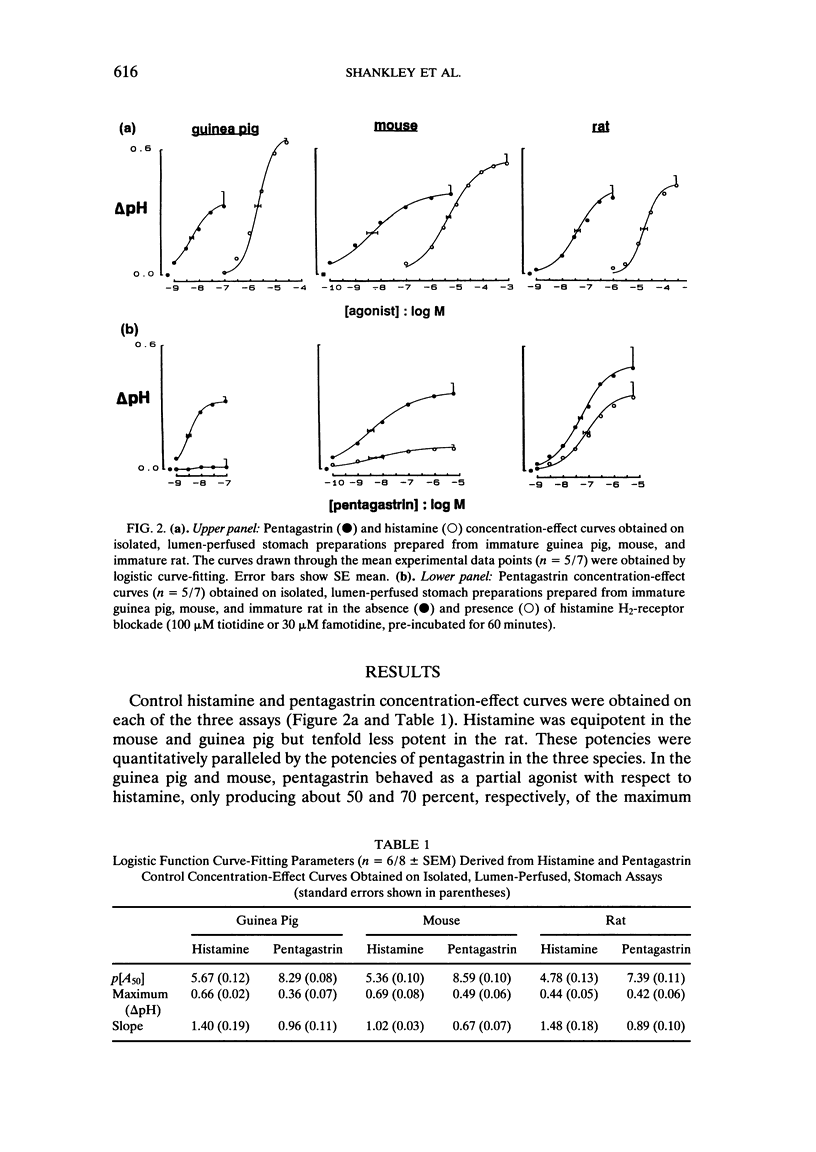
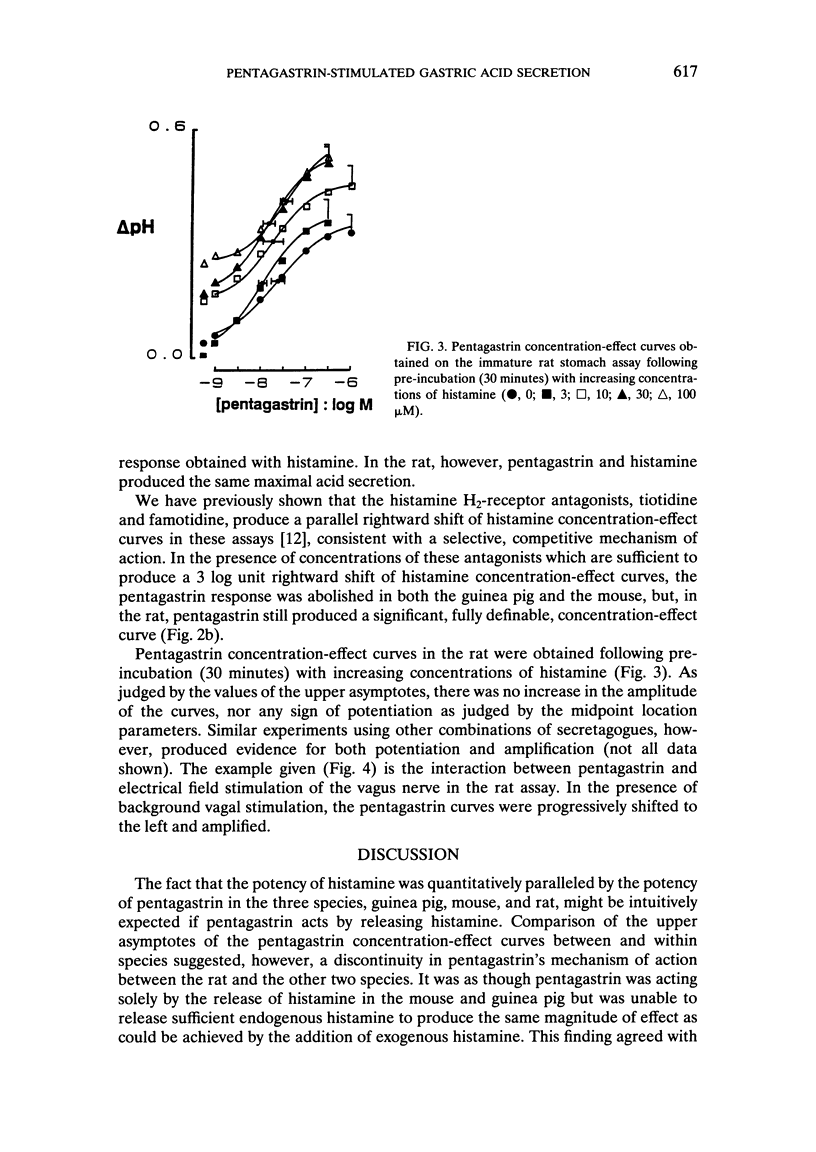
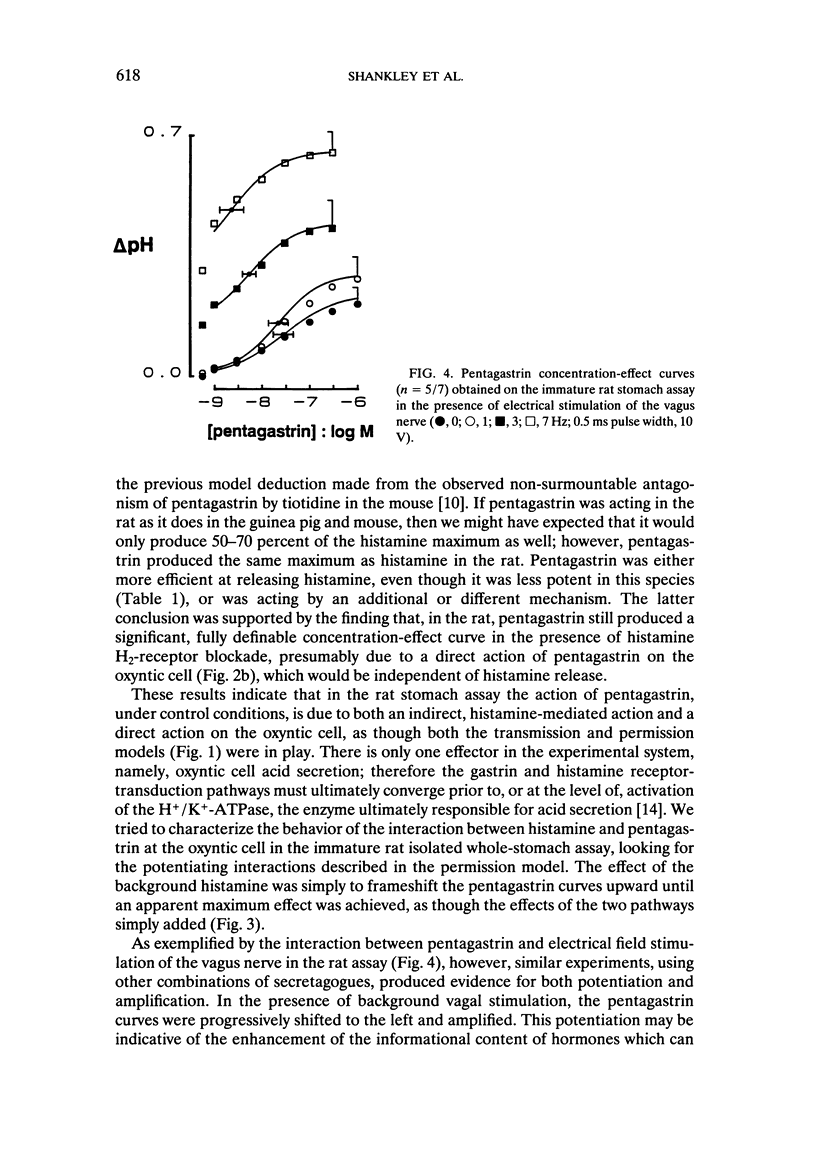
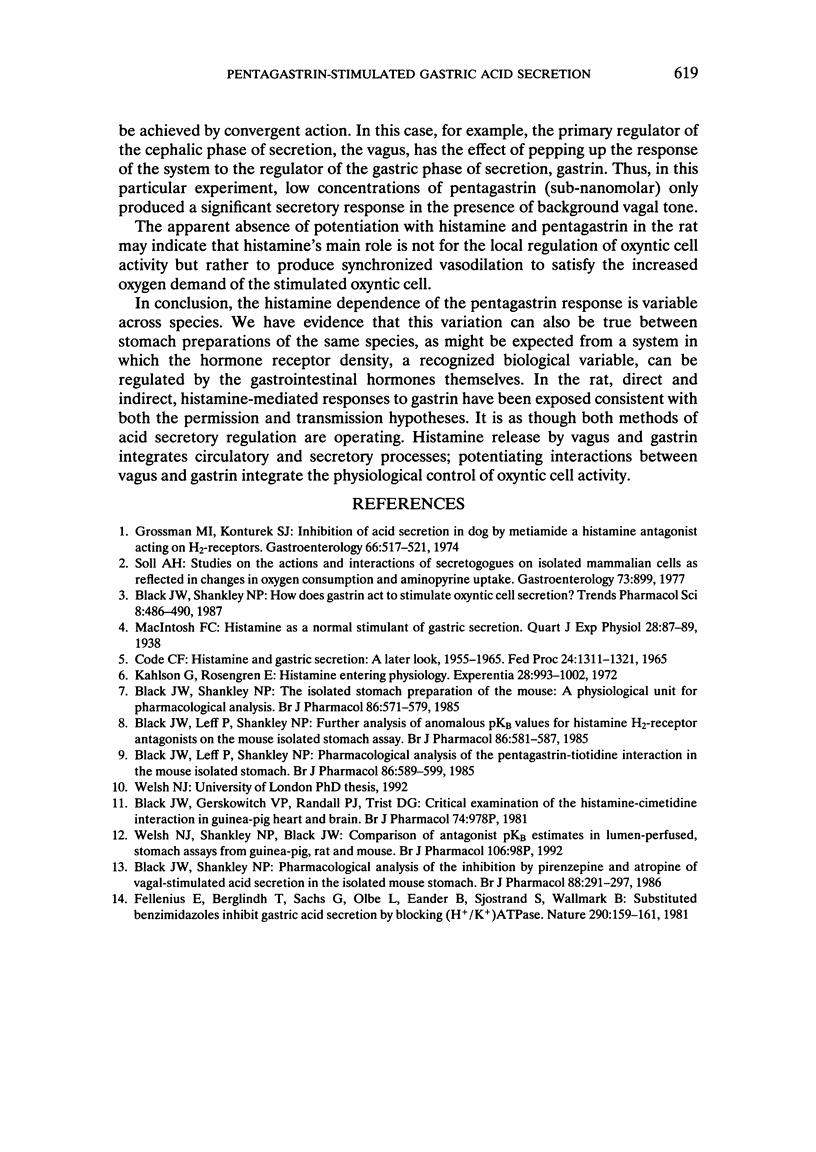
Selected References
These references are in PubMed. This may not be the complete list of references from this article.
- Black J. W., Leff P., Shankley N. P. Further analysis of anomalous pKB values for histamine H2-receptor antagonists on the mouse isolated stomach assay. Br J Pharmacol. 1985 Nov;86(3):581–587. doi: 10.1111/j.1476-5381.1985.tb08934.x. [DOI] [PMC free article] [PubMed] [Google Scholar]
- Black J. W., Leff P., Shankley N. P. Pharmacological analysis of the pentagastrin-tiotidine interaction in the mouse isolated stomach. Br J Pharmacol. 1985 Nov;86(3):589–599. doi: 10.1111/j.1476-5381.1985.tb08935.x. [DOI] [PMC free article] [PubMed] [Google Scholar]
- Black J. W., Shankley N. P. Pharmacological analysis of the inhibition by pirenzepine and atropine of vagal-stimulated acid secretion in the isolated stomach of the mouse. Br J Pharmacol. 1986 May;88(1):291–297. doi: 10.1111/j.1476-5381.1986.tb09498.x. [DOI] [PMC free article] [PubMed] [Google Scholar]
- Black J. W., Shankley N. P. The isolated stomach preparation of the mouse: a physiological unit for pharmacological analysis. Br J Pharmacol. 1985 Nov;86(3):571–579. doi: 10.1111/j.1476-5381.1985.tb08933.x. [DOI] [PMC free article] [PubMed] [Google Scholar]
- Code C. F. Histamine and gastric secretion: a later look, 1955-1965. Fed Proc. 1965 Nov-Dec;24(6):1311–1321. [PubMed] [Google Scholar]
- Fellenius E., Berglindh T., Sachs G., Olbe L., Elander B., Sjöstrand S. E., Wallmark B. Substituted benzimidazoles inhibit gastric acid secretion by blocking (H+ + K+)ATPase. Nature. 1981 Mar 12;290(5802):159–161. doi: 10.1038/290159a0. [DOI] [PubMed] [Google Scholar]
- Grossman M. I., Konturek S. J. Inhibition of acid secretion in dog by metiamide, a histamine antagonist acting on H2 receptors. Gastroenterology. 1974 Apr;66(4):517–521. [PubMed] [Google Scholar]
- Kahlson G., Rosengren E. Histamine: entering physiology. Experientia. 1972 Sep 15;28(9):993–1002. doi: 10.1007/BF01918636. [DOI] [PubMed] [Google Scholar]
- Soll A. H. Studies on the actions and interactions of secretagogues on isolated mammalian parietal cells as reflected in changes in oxygen consumption and aminopyrine uptake. Gastroenterology. 1977 Oct;73(4 Pt 2):899–899. [PubMed] [Google Scholar]


